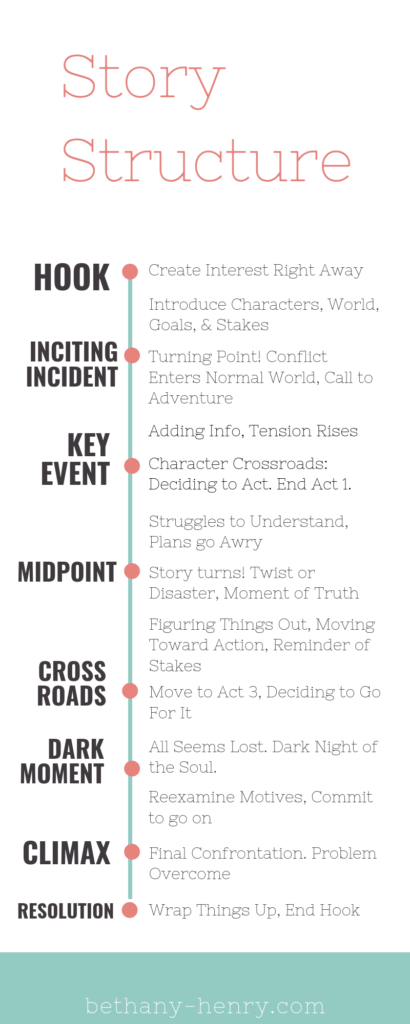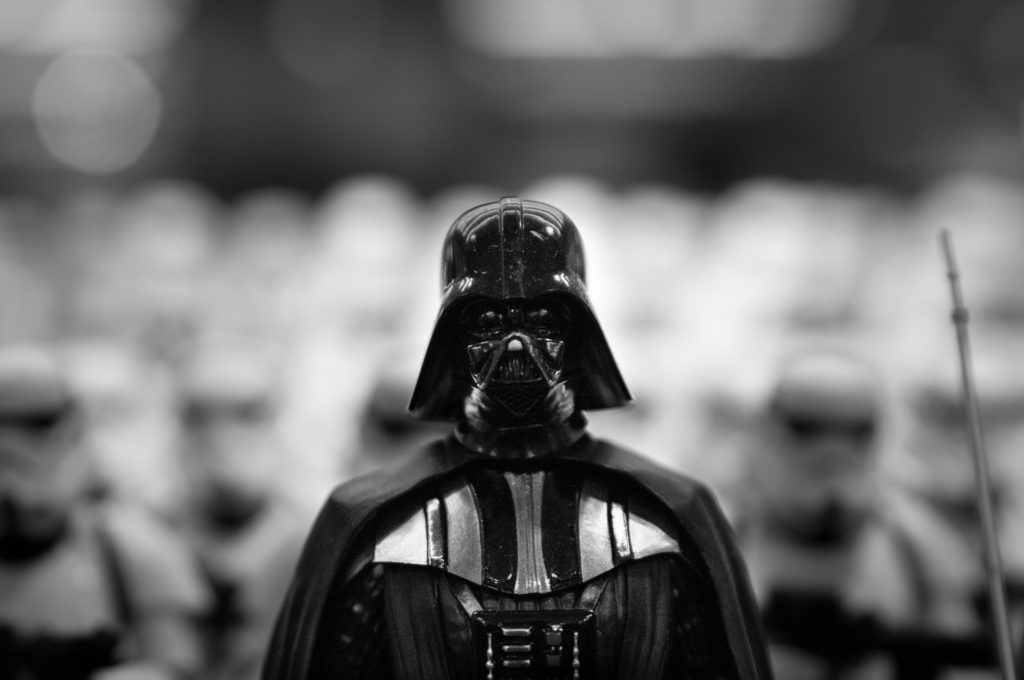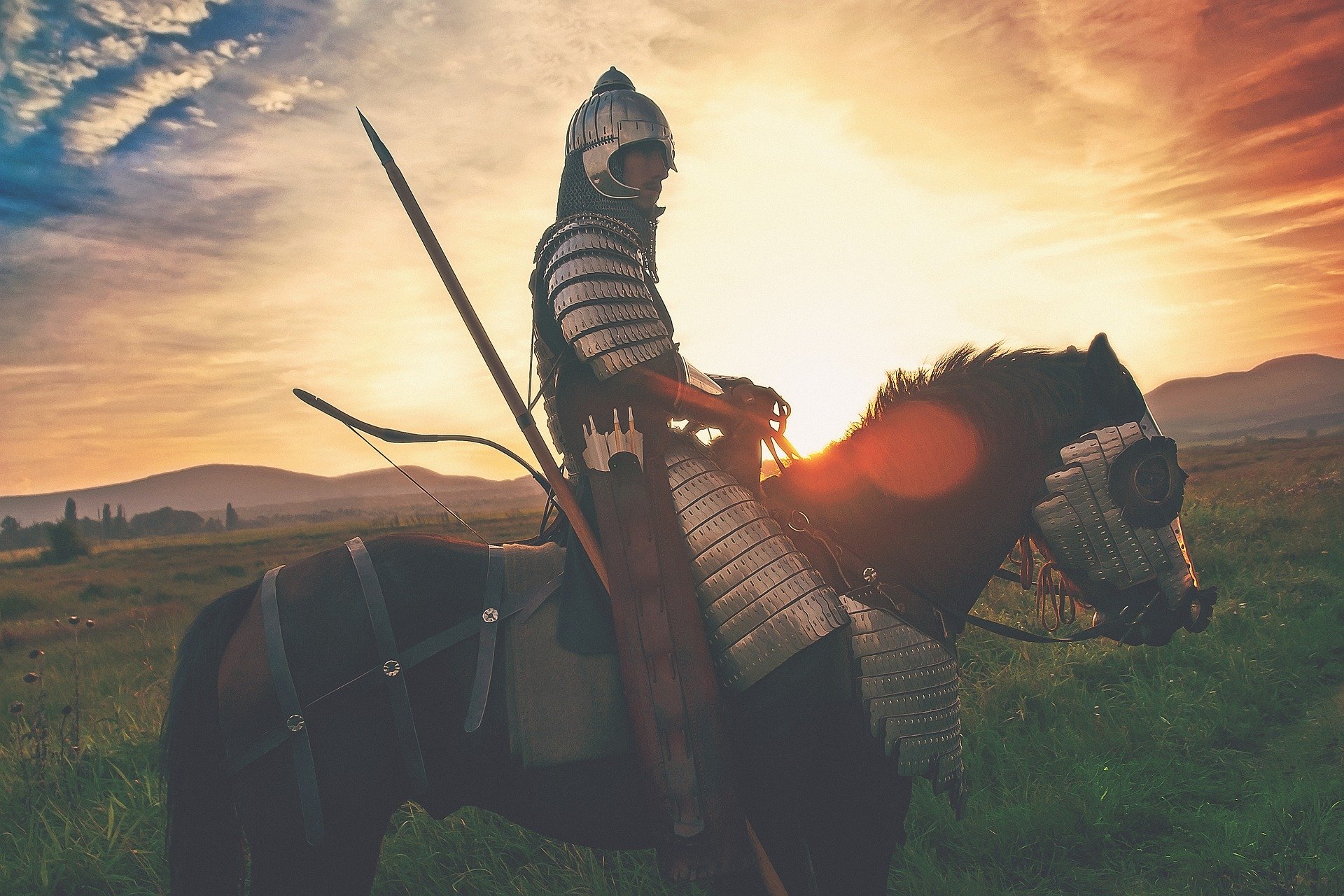Story structure provides us with a time-tested road map of elements to include in our stories to help them connect with readers and satisfy expectations. This structure gives us a framework to make our stories as powerful as possible.

We’ve looked at many components that make up a strong story previously. Today we’ll be looking at one of the most dramatic moments in our novel! This is the moment most of our story has been building toward: the story’s climax.

The Climax
In some ways, all of Act 3 is the climax of our story. Things are happening, stakes are rising, and it’s filled with conflict.
However, there should be a pinnacle of this conflict where everything comes together in a scene that changes things completely.
Whether the enemy is defeated, the lovers are together at last, or a truth has been discovered that alters how we see things- there should be a moment where the story’s central problem is overcome.
This is the story’s climax.
6. Components of a Strong Story’s Climax
1. The protagonist faces their enemy
Our hero/heroes have been working toward this moment and finally they are face to face with their opposition.
Every story is different so this confrontation will vary but the climax of the story is the most powerful when the protagonist can be face to face with their enemy. They have been at odds and struggling against each other in various forms throughout the story- now is the moment when it comes together and they are ready to fight it out.
They cannot both get what they want and so this moment will decide who wins the day.

2. The villain must be powerful
Whether the enemy is a warlord, a natural disaster, or anything in between, especially at the climax they need to be shown as incredibly powerful.
Fighting them is what our story has been moving toward all this time and they need to be worth the work.
Show the villain overcoming any problems in their way. Show them directing their efforts intelligently. Have them plan for any traps and betrayals.
To keep the tension high, there should be doubts that the villain can be overcome.
No weak villains, please. Having the villain be not a big deal after all is a huge letdown after all the buildup and it makes us think less of our hero. The strongest stories have the strongest villains.
3. The protagonist must be active
The hero needs to be directly involved and taking action toward their victory. Being present at the scene and following along with things is not enough.
Really the protagonist needs to be active through much if not all of the story.
They may not need to strike the killing blow or make the closing argument to win the case- but they should be somehow actively involved. This could be through any number of ways, such as delivering important information, figuring out a vital clue, or shouting a warning.
If the protagonist isn’t active in the climax to the story we should consider if we’ve chosen the right protagonist or climax for this particular story.
4. No contrived solutions
“Deus ex machina” is when story problems are solved by contrived and improbably solutions, like a character winning the lottery or just happening to discover a magic button that will save the world.
Please don’t do this!
Having contrived solutions frustrates readers and makes our stories implausible. If we find this is the case in our story, we need to brainstorm other solutions to the problems and rework our stories as needed.
A rule of thumb I’ve heard (but can’t remember where) is that all random events in stories should make things harder for the protagonist and that anything good needs to be earned.
5. Include symbolism and theme
A story’s theme is the deeper answer to what the story is about. Is it about love? Justice? Finding true love that overcomes all else?
This theme should show up in the climax of our novel. It could be shown through symbolism that has been established earlier in the story or possibly by contrasting the hero’s values with the villain’s as they face each other.
6. The protagonist can show what they’ve learned
Finally, climax is where the hero can demonstrate how they’ve changed since the beginning of the story.
Ideally our character has grown throughout the story (often called their character arc).
A powerful climax will force the protagonist to use their new skills, knowledge, or character traits in order to be victorious.
This brings both the external plot arc to victory (by defeating the villain) at the same time as it shows the character arc being victorious (by reaching growth of some kind).
Bonus: Sacrifice
I’d argue in addition to the components listed above, that sacrifice is an important trait of a powerful climax.
This is where the hero sacrifices something important to them- their safety, their pride, their belongings, their dreams, or even their lives- in order to save others or reach their goal.

So how do we do this?
So… the story’s climax can be a lot! There are a lot of aspects to consider.
The story’s climax should be the most dramatic and powerful scene in our novel.
With that in mind, don’t rush through it in a hurry to finish the story. It may take several attempts and brainstorming sessions to sort out how the pieces work together.
It’s worth taking the extra time (and extra revisions) to ensure characters, setting, theme, and plot are all coming together to make this a strong moment!
For further reading:
The Climax in the Context of the Story Arc – The Writing Cooperative
4 Ways to Improve Plot/Climax in Your Writing – Writer’s Digest

What components to a great climax did I overlook here? What is the most important part of a story’s climax?




